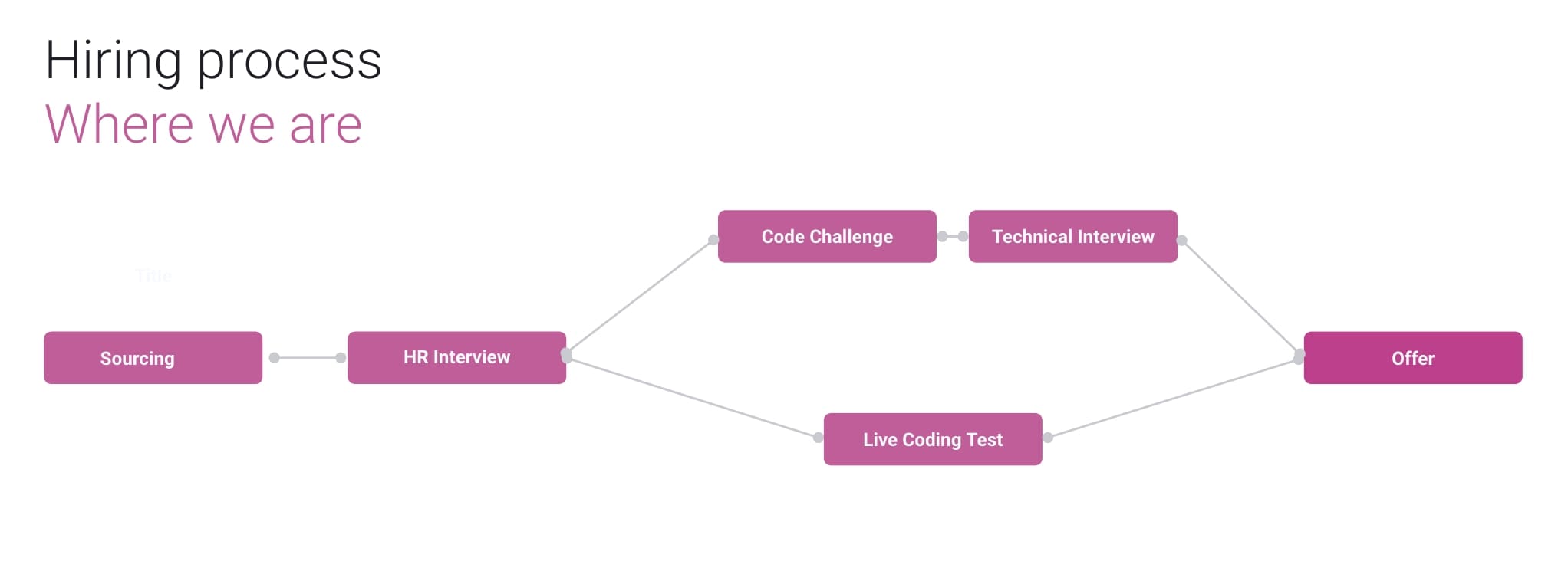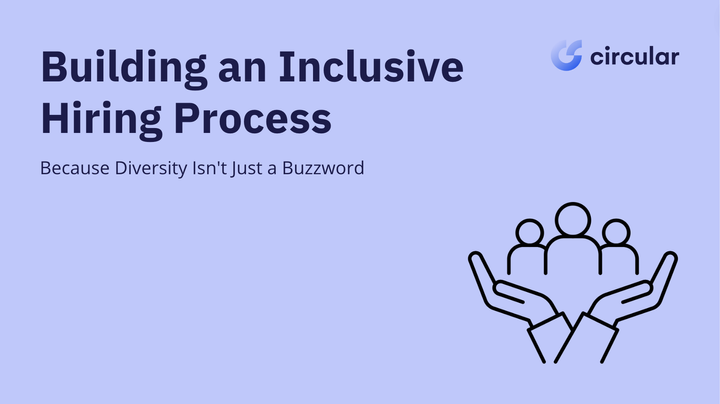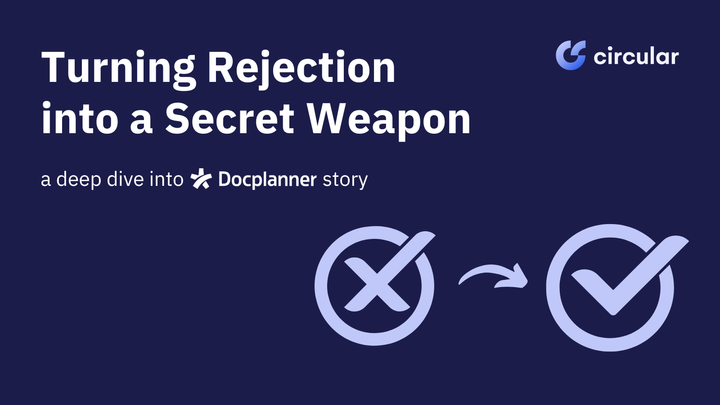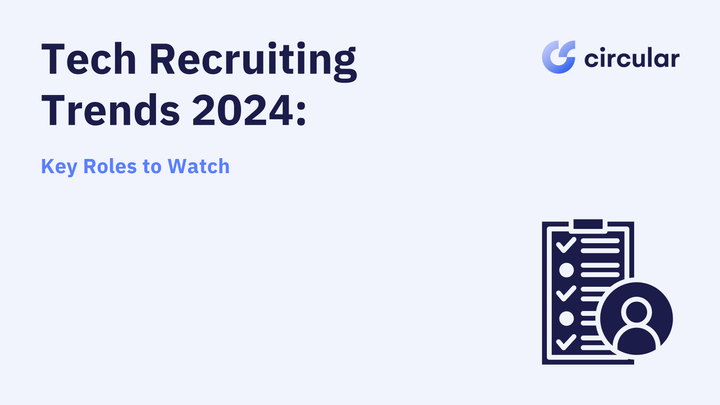How introducing live coding tests has led to a great candidate experience

Many companies use code tests as a key process within their hiring process in order to determine the programming level of their candidates and check if they have the right seniority needed for the open position. So far, it has been a useful tool for recruiters, but with the rapid growth of the programming sector, recruiting for these roles is becoming increasingly more competitive for HR Team. This growth in competition makes it harder for the companies to hire the right candidate, and on top of that, HR teams in charge of hiring these tech positions don’t normally have deep expertise in software development, so, as in every competitive environment, innovation wins.
Last week we hosted our Circular Community Meetup in Madrid, where we invite talent professionals from our community to talk about industry topics. We had the pleasure of having Marina Dávila, HR Generalist, People & Culture from One Beyond who spoke about how introducing live coding tests has improved candidate experience. We liked it so much that here we are, writing a post about it.
The candidate experience
First things first, what is the heck is the candidate experience?
The candidate experience is the perception from a candidate's perspective of the hiring process of a company. It doesn't start with the first interview, which obviously is a key part of the candidate experience, it starts with the first time a candidate reads a job description, followed by the interviewing process, feedback sessions and finally the onboarding.
We have already mentioned how competitive the software development sector has turned in for tech recruiters, meaning that they need to nail the efforts of bringing the developer's attention to their company and job offers. Well, these efforts should start by creating an outstanding candidate experience allowing the candidate not just to understand the company's needs & wants for the job, but also its culture and how is the team they will be sharing time with.
Marina Dávila explained how they changed their hiring process when introducing the live coding test with a simple slide;

The old-fashioned coding test
As you can see, they used the "regular" code testing, which consists of a specific code challenge created by the technical teams, and sent to the candidates with a flexible period to complete it, their candidates' avg. to complete it is around 15 days. Once the candidate sends the solution, it will be corrected by the tech team, which will, later on, pass feedback to the recruiters and appoint a technical interview with the candidate.
This process allows the company to check the level of quality, identify seniority and then see how candidates defend their work in the technical interview. But it lacks many other things, such as conversational touch between candidates and tech team, a lack of visibility of how the candidate overcomes possible challenges found during the test, and also a clear lack of conciliation from a candidate's view as they had to accomplish a test that might take from 4 to 6 hours to be completed.
Marina highlights that the candidates' drop off at this stage was one of the main concerns, and also one of the main reasons to look for new formats. They addressed this stage's drop off to a lack of time to complete the asset, an acceptance of other offers or candidates that just decided to not do it.
Due to all these reasons, this wasn't enough for the candidate's experience and the hiring process they needed.
The live coding test
They came up with the idea of implementing a live coding test to deal with the downsides of the "regular" test code and this is what they came up with.
A completely new process in which the technical team will have a bit more implications. The code test would be done during a 90-minute live (and always remote) interview with 2 senior members of the tech team leading the test.
30 minutes before the call starts, a document with the test info and goals is sent to the candidate so there is some context to it. As the interview kicks off, the interviewers will share their screen and go through the details of the test. Once the exercise is clear to the candidates, it will be their turn to share their screen and start the test. There is always a high level of communication, any details are commented and the tech team itself also participates in the test, working hand in hand with the candidate and allowing candidates to understand how the team works.
The goal is to create a very collaborative environment, in which candidates will have the opportunity to meet two members of the tech team, collaborate with those who would be their future colleagues and find synergies with them. Therefore offering an improved candidate experience.
The live coding test topics will depend on the open position, for front end or back end developer positions, there is just one live test with topics related to those areas, but when it comes to full stack developers there might be two different live tests looking at front and back skills in each one of them.

Once the test is finished the interviewers will complete a template in which areas such as code quality and efficiency, good practices or commits quality are evaluated and sent to the HR owners, along with some qualitative comments that will allow recruiters to understand not just the programming level and seniority of the candidates, but also their fit with the team and behavioural performance during the test.
Once the HR team gets these reports, they will send an email with the session's feedback and offer a quick call in case there is a need to comment on any point in depth.
Here is an old live coding test example from DCSL GuideSmiths.
Live coding test benefits
- Key to improving the processing speed, from 4-6 hours and a period of 15 days for competition to 90 minutes with feedback ready, while improving both, candidate experience and hiring process. Speed is a key factor in tech. hiring processes as candidates might be participating in many of them at the same time, so the company that finishes the process earlier and offers a higher quality will have more chances to hire.
- Higher conversion rates, normally there is a big drop of candidates once the companies ask for the code test in the "regular" way, with this new format candidates' acceptance has improved considerably.
- This new hiring process allows the company to determine the candidates' seniority with higher accuracy, and with a lot more context to this metric. The main reason for this conclusion is that the tech team has been able to programme and collaborate with the participants, looking carefully at their practices and approach or even how they react when finding a bug, that might be there on purpose :)
- Conciliation is also improved, as the company offers maximum flexibility for setting the live code test. It's also key to highlight that the test has gone from 4-6 hours to 90 minutes, and there is no need for an extra technical interview after the code test. The new format takes less time from the candidate and improves the quality of the process.
- The candidate has got to meet and work with key team members of the company and has had the opportunity to evaluate how they work and evaluate other colleagues' work. A huge improvement in the candidate experience.
Final conclusions
It is important to highlight that live code tests are a very good option for mid-senior and senior positions, but when looking for junior candidates, it might be a bit overwhelming as the test simulates situations and a programming looseness mainly gained through experience.
Looking at all those benefit points, we can see that not only there are 2 main lines of improvement.
From the candidate's perspective, the experience is enhanced not just with more flexibility and efficiency, but also with a lot more context about the team and the job-specific skills and possible bugs to be encountered during the work at that company. Marina mentioned that both, the "regular" and "new" coding tests are always offered to new candidates and so far 100% of them have chosen the live coding test.
On the other hand, from the companies' view, this new process allows ascertaining the candidate's skills, practices and behaviour when facing challenges and unplanned situations. All this while reducing the timings of the processes almost by half and allowing HR teams to have a clear and accurate feedback process from the tech team with quantitative and qualitative information about the candidates.
As said, innovation wins.





